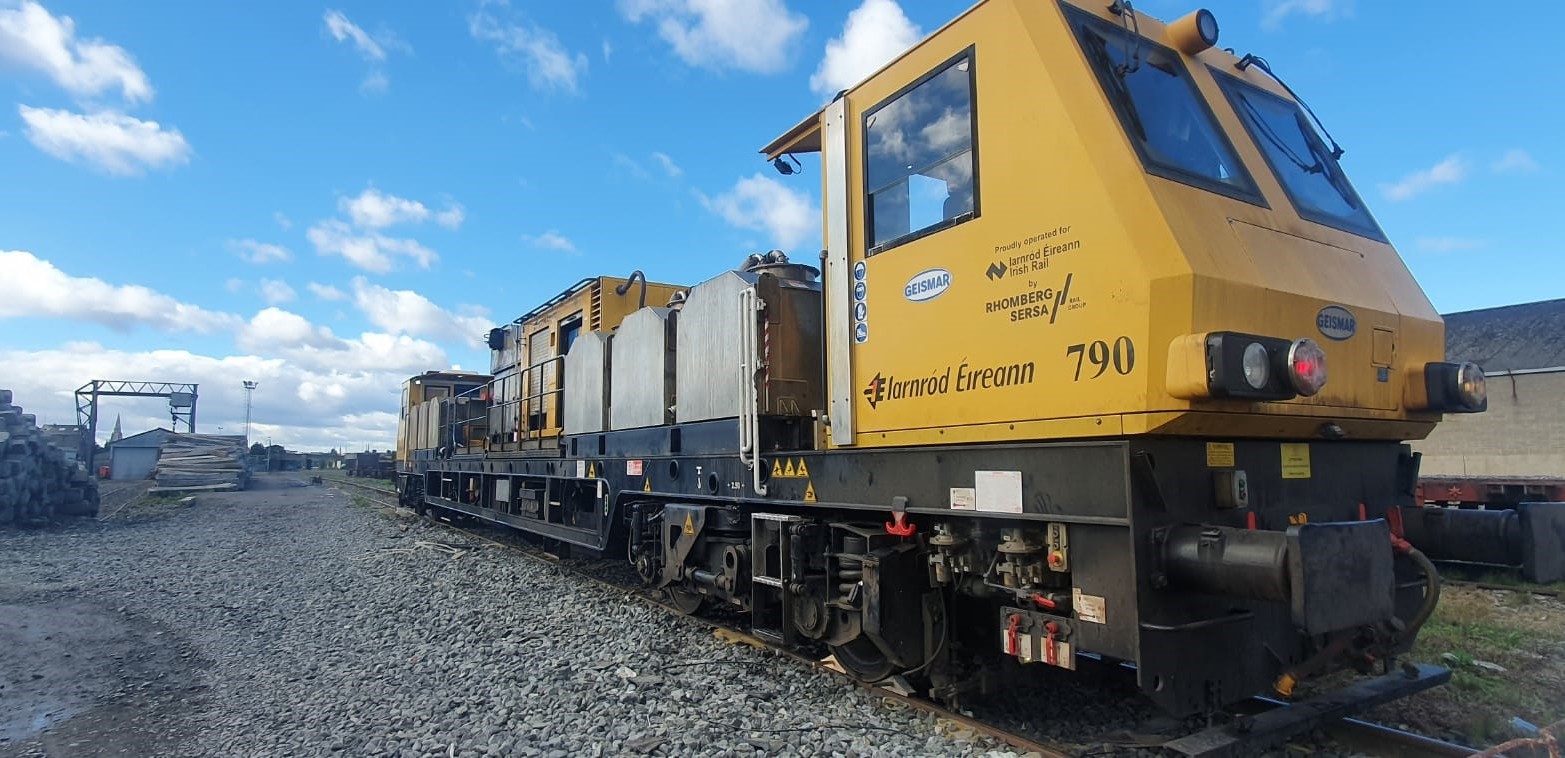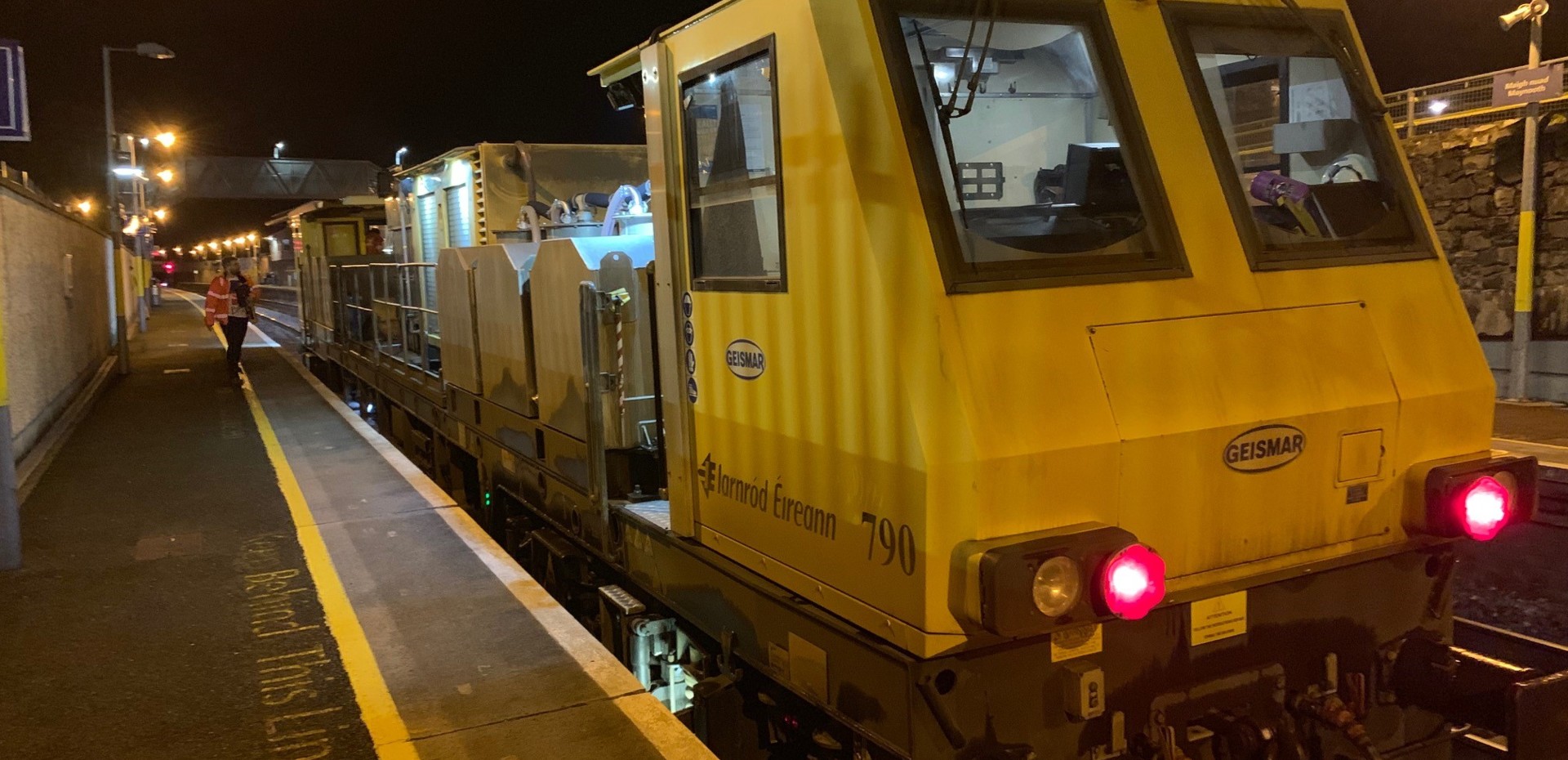In order to reduce and prevent delays in services, a substance called ‘Sandite’ is sprayed on the network in order to counteract the problems caused by the leaves. Sandite consists of a mixture of sand, antifreeze and steel shot.
Rhomberg Sersa Ireland carries out this work on the network for Iarnród Éireann / Irish Rail (IÉ) each year.
Machine 790 is used for this work and it is carried out at night and early morning in order to cause minimum disruption to rail services and passengers.
Machine 790 can carry out a number of functions but when it is modified for Sandite Season, it first clears the fallen leaves from the railhead using high-pressure water at the front of the train.
It then sprays the Sandite onto the rail surface. The removal of the leaves and the application of the specially formulated gel improves adhesion between train wheels and the railhead, meaning passenger and freight trains travelling on the network can gain sufficient traction.
Rail operators in the UK and other European countries also experience similar difficulties at this time of year and carry out similar projects to ensure the timely and safe operation of services.
Iarnród Éireann / Irish Rail (IÉ) has a number of other measures in place during Low Rail Adhesion (LRA) season including data collection which allows both IÉ and Rhomberg Sersa Ireland to focus on contributory factors or known hotspots where leaf fall is particularly high.
Sandite Season runs from October to December each year with a concentration of treatment on the heavily used Dublin suburban routes.
Rail operators in the UK and other European countries also experience similar difficulties at this time of year and carry out similar projects to ensure the timely and safe operation of services.
Iarnród Éireann / Irish Rail (IÉ) has a number of other measures in place during Low Rail Adhesion (LRA) season including data collection which allows both IÉ and Rhomberg Sersa Ireland to focus on contributory factors or known hotspots where leaf fall is particularly high.
Sandite Season runs from October to December each year with a concentration of treatment on the heavily used Dublin suburban routes.












